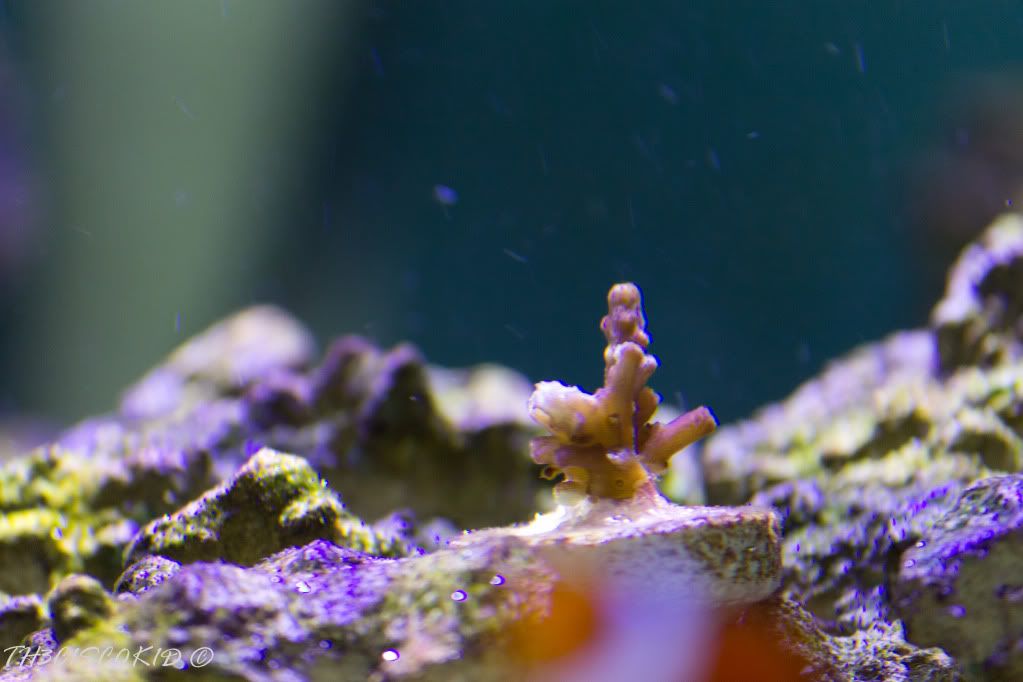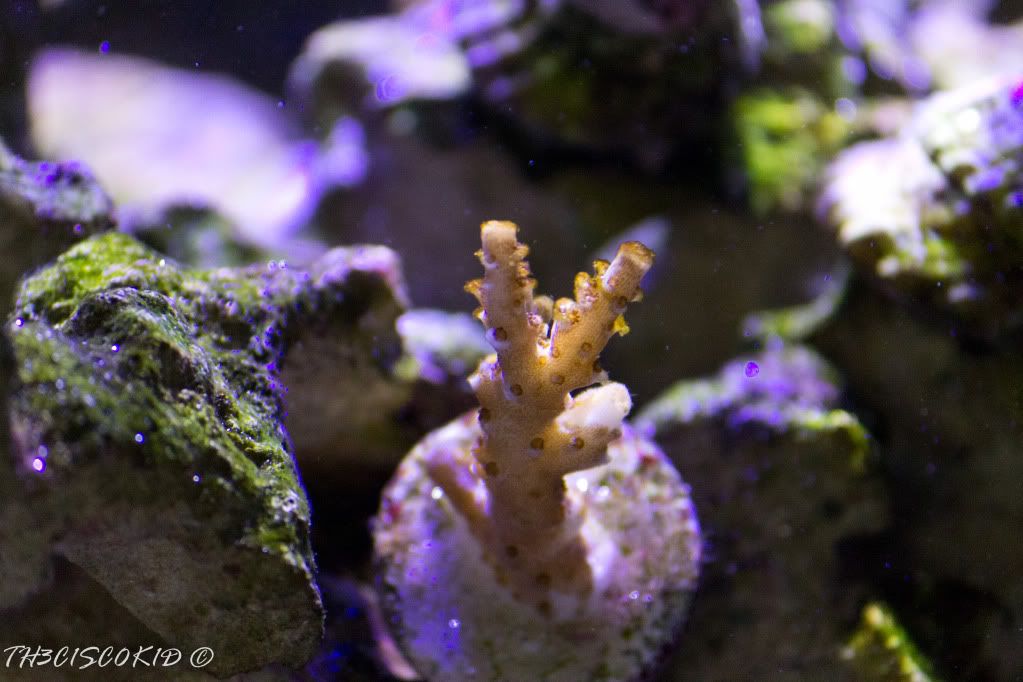Possible Lighting Intensity Issue Causing Tissue Necrosis on SPS Corals.
by
, 10-24-2011 at 09:38 PM (6821 Views)
I have run into my first major issue with my reef aquarium. I built my LED Lighting System myself. It consist of 4 independent Meanwell LPC-5-700W Drivers each with 6 LED's (three Cree XP-G R5 Cool White LED's & three Cree XP-E Royal Blue LED's) for a total of 24 LED's with 40 degree reflectors. I originally had the lighting system suspended about 8 inches from the top of the aquarium. My seabed is located 15 inches into the aquarium. This lighting system put out the equivalent of a 250 watt Metal Halide System (if not more). I have stable water parameters and temperature and decided to purchase a few small frags to test my worthiness of SPS Corals. I am starting to see sign of Tissue Necrosis. I immediately thought that this was caused due to my water parameters not being accurately assessed since I am utilizing an Aquarium Pharmaceuticals Test Kit. So I went to Greenwich Aquaria to purchase some Elos test kits. After some discussion about my issue we started to connect some dots. He has had a few customers with LED Lighting Kits (example: Aqua Illumination) that had their SPS Corals also experience Tissue Necrosis due to the intensity of the LED Lighting. So this started to make sense. I have a perfectly healthy clam that I purchased from a fellow reef keeper which has all the Mantle recessed for weeks. I originally suspected Pinched Mantel Disease but everything is starting to point to the intensity of the LED Lights. So I have raised the lighting system suspension from 8 inches to 16 inches above the aquarium in hopes to decrease the intensity but I may just have to purchase all new reflectors. What are your thoughts? Do you agree that the reflectors could be focusing too much light downward which is increasing the intensity to the level that the corals connect be exposed to? If so should I purchase 65 degree or 80 degree reflectors? Thank you in advance for all the advice.
View My Aquarium Journal Thread
http://www.reefaddicts.com/blog.php/...C1SC0K1D/page2














